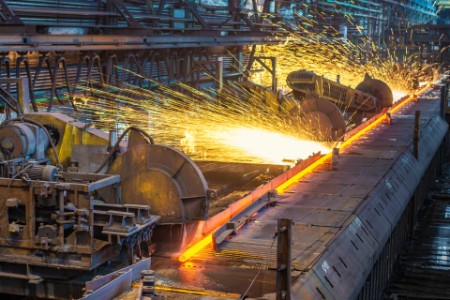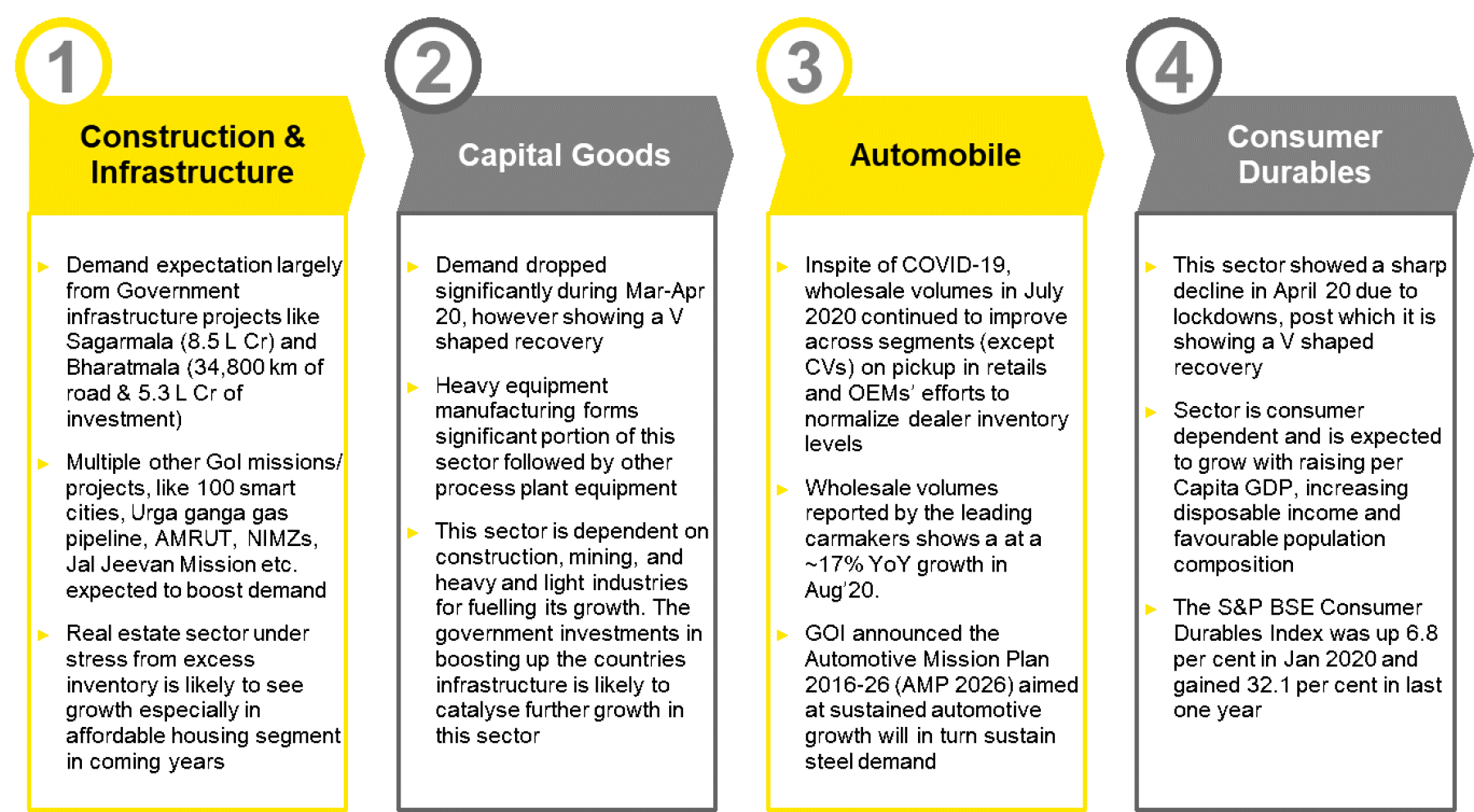Key interventions to boost the demand of steel
Today, the steel industry is looking forward to the support from the government, to bolster the steel demand not only in the short term, but also propel India’s steel industry to fulfil its ambitious targets. Resumption of construction activities through Unlock 4.0 is expected to strengthen domestic demand, while steel exports are likely to lose its momentum as China ramps up its domestic productions. Apart from this, the government can further support the steel sector through targeted policy initiatives such as reduction of taxes and cess on steel manufacturing inputs like iron ore and coke for domestic consumption, introduction of Border Adjustment Tax on import can be introduced less than or equal to the indirect levies to provide a level playing field for domestic steel manufacturers, expedite the imposition of Remission of Duties or Taxes on Export Product (RoDTEP) scheme and to work out favourable quota and duty regimes with US and GCC countries.
In line with the National Steel Policy envisaging at a capacity augmentation to 300 million tonnes (mt), major steel players will be adding capacity to reach ~ 200 mt by 2026, as per their announced plans. Fiscal incentives that are capital, expenditure and sales linked can act as enablers for players to set up steel mills.
While large steel plants investing progressively on green and clean technologies, the MSME/ SMEs sector are lagging way behind. Steel plants being one of the major polluters, significant incentives need to be provided to both large and small plants, to cut down carbon emissions, and improve dust, and water management. Experts believe that the next big wave of cleaner technology will see use of hydrogen as a fuel substitute to carbon, coupled with use of renewable energy.
As far as the role of private sector is concerned, there is a need for continued and rapid investment to fund research on steel as a key sustainable substitute of wood, plastic, concrete and aluminium would be an added incentive for the steel to remain a most sought after material for the future of India and its steel industry. Adoption of digital technologies is yet another key lever for a sustainable growth, while maintaining robustness. Digitalization of steel industries in an integrated manner will further improve the operating efficiency and quality, thereby, reducing the operating cost.



